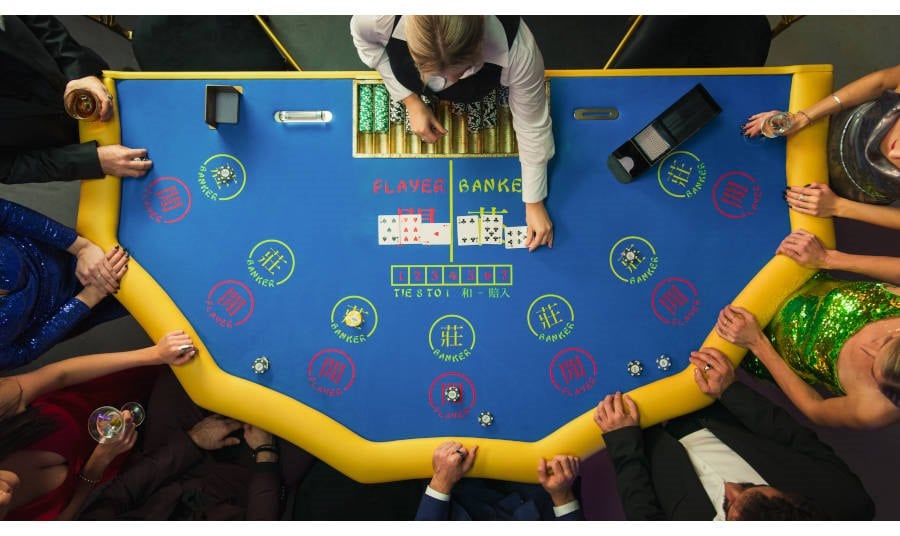
How to Play Baccarat and Win
Baccarat is a classic table game that has been a favorite among casino-goers for centuries. Known for its simplicity and elegance, baccarat offers an exciting mix of chance and strategy. Whether you're new to the game and want to learn how to play baccarat, or looking to refine your skills, mastering the basics is essential to increase your chances of winning.Baccarat Basics
Baccarat is a straightforward game that compares the hands of two participants: the "Player" and the "Banker." To understand how to play baccarat, it's important to note that, unlike other card games, players don't make decisions after dealing the cards. Instead, they bet on which hand they believe will win or if the game will result in a tie.Objective of the Game
The main objective of baccarat is to bet on the hand that the total value will be closest to nine. Each hand is dealt two cards, and the values of these cards are added together to determine the hand's total. The hand that comes closest to nine wins. If the total exceeds nine, only the second digit of the total is counted (for example, if the total is 15, the hand value is 5).The Table Layout
The baccarat table is typically large, accommodating 12 to 14 players. The table layout includes three main betting areas for each player: Player, Banker, and Tie. These are the primary betting options in baccarat. The dealer's area is situated at the center, and the dealer is responsible for handling the cards and managing the game's flow.How to Play Baccarat
Learning how to play baccarat is easy as the game is largely handled by the dealer. However, understanding the rules and betting options can help you make informed decisions.Dealer Rule
The dealer is central to the game of baccarat. After all bets are placed, the dealer deals two cards to both the Player and Banker. The dealer follows specific rules to determine if a third card should be drawn for either hand:- If either the Player or Banker has a total of 8 or 9, both hands stand, and no further cards are drawn. This is known as a "natural."
- If the Player's hand totals 5 or less, the Player draws a third card. If the Player stands, the Banker follows specific rules to decide whether to draw a third card based on their total. You can check the rules for the dealer (or bank) hand here.
Player Rules and Betting Options
Players determine the value of their hand by specific rules. Cards 2-9 have their face value, while 10s and face cards have no value. The hand that has a value closes to nine wins. Hands that total more than nine can subtract 10 to reach the final total. All hands have a final value from 0 to 9.When playing baccarat, you have three primary betting options, each with its own odds and potential payouts:
Player Bet
A bet on the Player's hand is straightforward: you're wagering that the Player's hand will have a higher total than the Banker's hand. If the Player wins, your bet pays out 1:1. While the Player bet has a slightly higher house edge than the Banker bet, it's still a popular choice among players.Banker Bet
The Banker bet is the most statistically favorable option in baccarat, with a slightly lower house edge than the Player bet. When you bet on the Banker, you're wagering that the Banker's hand will win. If the Banker wins, your bet pays out 1:1, minus a 5 percent commission.Tie Bet
The Tie bet is a wager that the Player and Banker hands will have the same total. This bet offers a much higher payout of 8:1, but it also carries a significantly higher house edge. While the Tie bet can be tempting due to its potential payout, it's generally considered a high-risk option and is less commonly played by experienced baccarat players.Baccarat Strategies
Mastering baccarat involves more than just understanding the rules; it also requires employing effective strategies to maximize your chances of winning. While baccarat is largely a game of chance, certain betting systems can help you manage your bankroll and approach the game with a more structured plan. Here are three popular strategies that players often use.Martingale
The Martingale strategy is one of baccarat's oldest and most straightforward betting systems. It involves doubling your bet after every loss, with the idea that a win will eventually recoup all previous losses and provide a profit equal to the original bet. For example, if you start with a $10 bet and lose, you would then bet $20 on the next round. If you lose again, you would bet $40, and so on. The strategy works best when you have a substantial bankroll and the discipline to stick to the system.Paroli
The Paroli strategy is the opposite of the Martingale. Instead of doubling your bet after a loss, you double your bet after each win. This positive progression system aims to capitalize on winning streaks while minimizing losses during losing streaks. For example, if you bet $10 and win, you would bet $20 on the next round. If you win again, you would bet $40. After three consecutive wins, you return to your original bet. The Paroli strategy is less risky than the Martingale and can be effective for players looking to build their bankroll during a hot streak.Fibonacci
The Fibonacci strategy is based on the famous Fibonacci sequence (1, 1, 2, 3, 5, 8, 13, etc.), where each number is the sum of the two preceding ones. In this system, you increase your bet according to the sequence after a loss and move back two steps in the sequence after a win. For example, if you start with a $10 bet and lose, your next bet would be $10, then $20, then $30, and so on. If you win at any point, you move back two steps in the sequence. The Fibonacci strategy is more conservative than the Martingale and can help manage losses while gradually building winnings.
